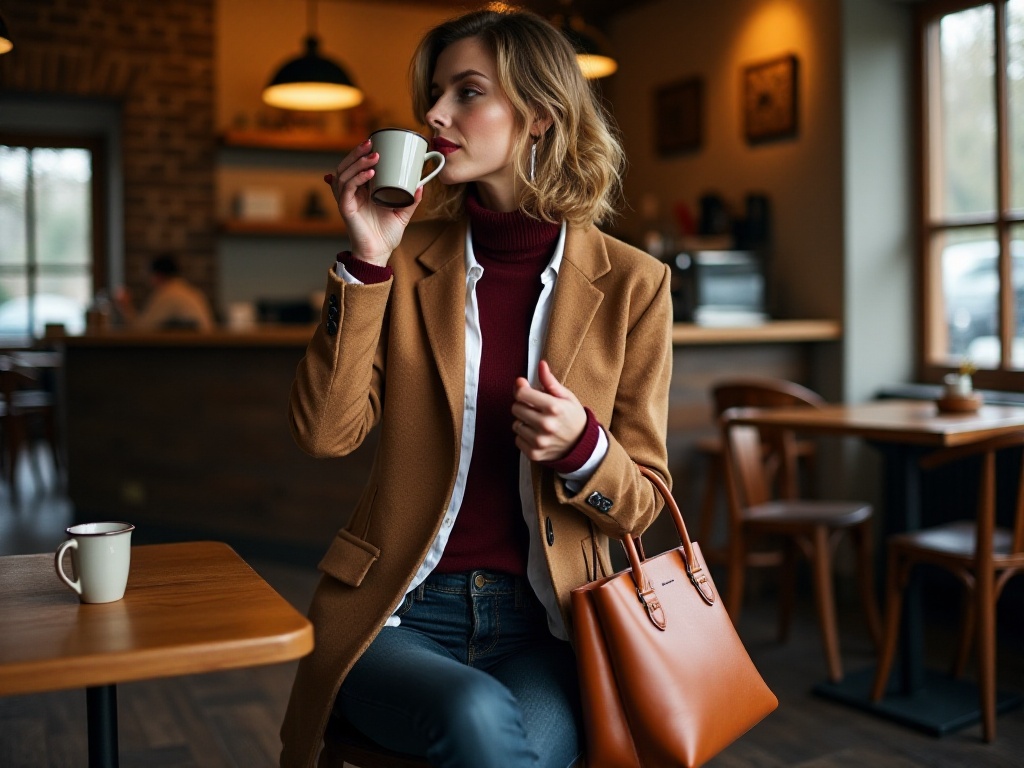Introduction
Standing in front of the closet scratching your head, unable to find the right combination - this is probably a frustration many people face every morning! Even I used to struggle with this when I first started exploring fashion styling. Despite having many clothes in the closet, nothing seemed to work right - pieces that looked beautiful in the store somehow felt off when worn. After years of exploration and practice, I've finally found my own styling formula, and today I'd like to share my insights with you, hoping to help you discover your own fashion style.
Color Coordination
Color coordination is the most fundamental and important aspect of fashion styling! No exaggeration - choosing the right colors can instantly elevate your appearance. I've seen so many people whose entire presence changed just because they learned to coordinate colors well. As magical as it seems, color coordination actually follows certain principles.
To achieve a sophisticated look with colors, you first need to understand your skin tone. I have warm-toned skin, so I look particularly good in earth tones like camel and caramel. Whenever I wear these colors, I receive many compliments, and they make even my bare face look healthy. If you have cool-toned skin, try blues, purples, or emerald greens - these colors will make you look especially sophisticated.
Choosing appropriate colors for different occasions is also crucial. For work settings, stick to navy blue and gray to appear professional and reliable. I have a friend who wore bright red to an important meeting, and it made her appear less professional throughout the session. Conversely, on weekends, you can boldly experiment with bright colors to appear more energetic.
For color coordination techniques, I most frequently use monochromatic combinations. For example, an all-beige look might include an off-white top, light camel pants, and a dark camel coat, creating distinct yet harmonious layers. Another useful technique is complementary color matching, but be mindful of proportions. For instance, I particularly love pairing a bright yellow top with navy blue pants - eye-catching yet not overwhelming.
Color coordination should also consider seasonality. Spring calls for life-filled colors like pink and light green; summer suits bright yellows and refreshing blues; autumn works well with warm browns and oranges; winter can embrace deep purples and elegant burgundies.
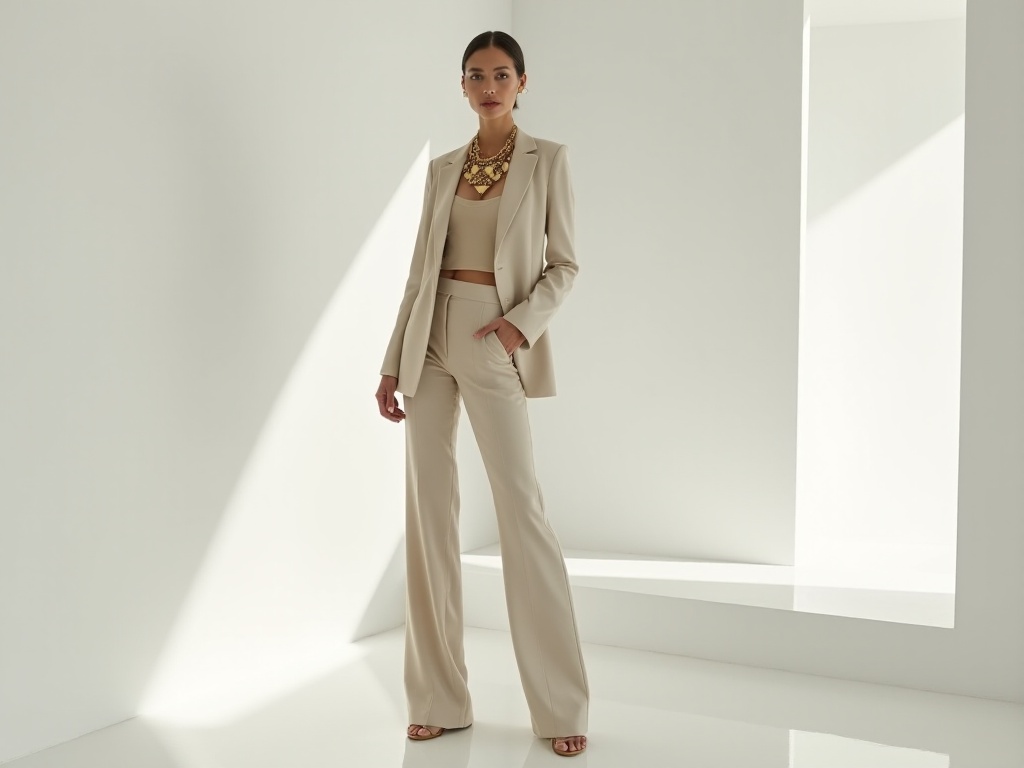
Investment Rules
When it comes to buying clothes, the most common trap is being lured by low prices. I used to love buying clothes that cost just a few dozen dollars, thinking that since they're so cheap, buying several wouldn't hurt. The result? They either lost shape after two wears or faded after one wash, ultimately becoming "trash" in my closet.
After years of lessons learned, I now firmly believe in "buy quality, not quantity." Instead of buying ten cheap pieces, it's better to invest in one quality basic piece. Last year, I spent over $3,000 on a cashmere coat. Though it felt expensive at the time, after wearing it for a whole winter, I realized it was totally worth it! The fabric is extremely comfortable, it keeps me warm, and most importantly, it gives me such presence - I feel super confident walking down the street.
Investment in clothes requires strategy. First, choose classic styles that won't go out of fashion. My cashmere coat has a simple double-breasted design that goes with everything. Second, choose versatile colors that are easy to match. Third, pay attention to fabric quality - good fabrics are comfortable and maintain their shape.
Many might say expensive clothes are too burdensome. My advice is to progress gradually, starting with some important pieces. For example, a good coat or a pair of quality leather shoes - these items are worn frequently and significantly enhance your overall look.
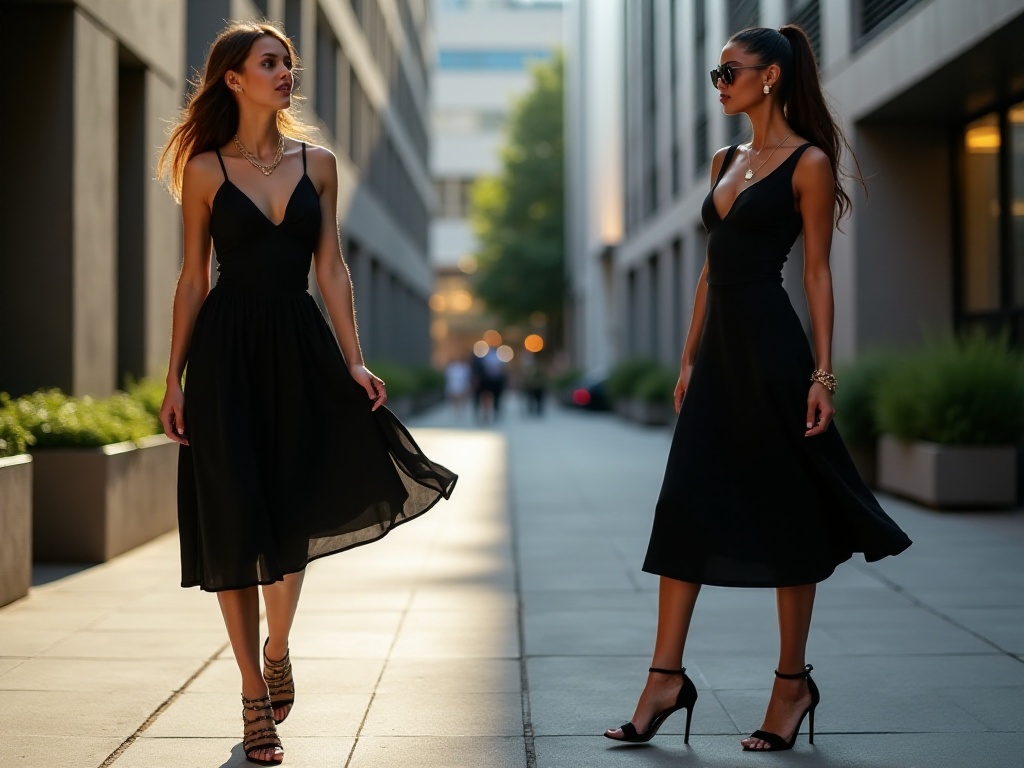
Layering
To achieve a sophisticated look, layering is essential. However, remember that layering isn't simply piling clothes on - it requires technique. I've summarized some practical layering tips to share with everyone.
First is the choice of base layer. I recommend having some basic underlayers, such as white, black, or gray knit sweaters or T-shirts. These base pieces are versatile and won't steal the show. I particularly love mock-neck sweaters - they're both warm and elegant.
The middle layer can include more design-focused pieces, like plaid shirts or striped blazers. This layer best expresses personal style, so you can be bolder. I often choose special textures or patterns to make the overall look more interesting.
The outer layer usually consists of coats or jackets, mainly serving to keep warm and elevate the overall style. When choosing outerwear, pay attention to shoulder line positioning - too wide looks bulky, too narrow looks cramped.
When layering, mind the length variations. Generally, pieces should go from short to long from inside out for the most harmonious look. For example, pair a waist-length knit sweater with a hip-length blazer and a knee-length coat for perfect length layering.
Texture matching is also important. Combining different textures can enhance the outfit's quality. For instance, knit with leather, or silk with tweed - these texture combinations make outfits more interesting. However, limit textures to three types to avoid looking messy.
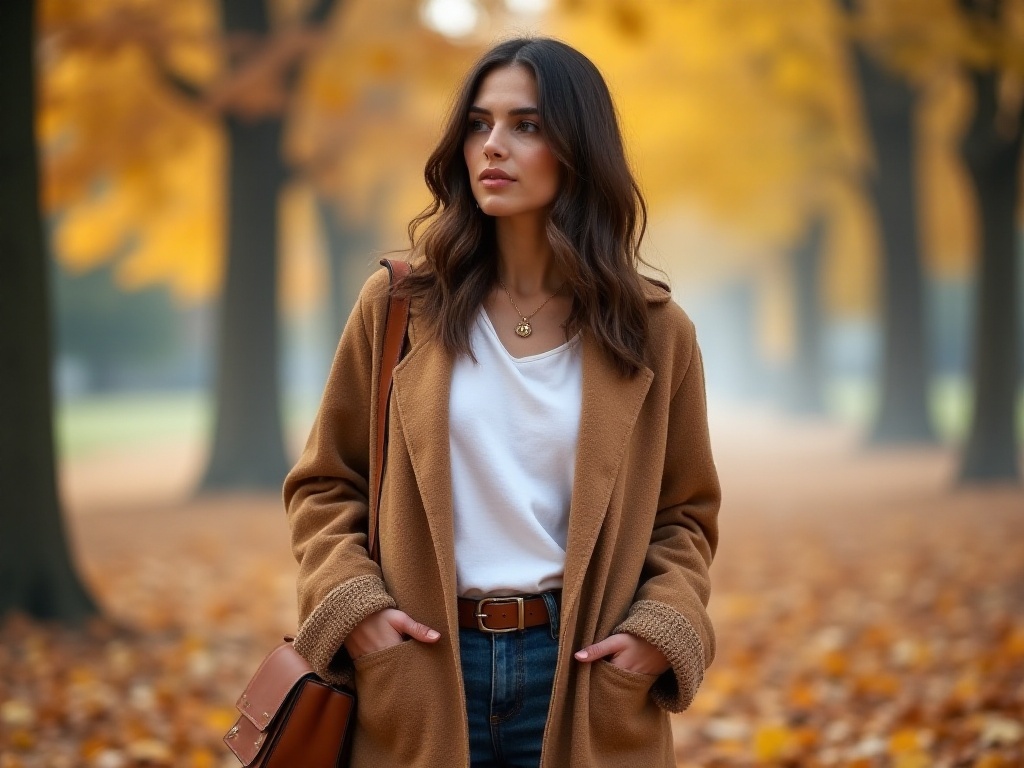
Accessorizing
Many people often overlook the importance of accessories, but they're like the finishing touch that can instantly elevate an outfit. Remember, it's not about quantity but quality.
Necklaces are my most frequently used accessories. A well-designed necklace can make even the simplest white T-shirt stand out. When choosing necklaces, consider necklines - round necks work well with shorter necklaces, V-necks with longer ones.
Earrings are also very useful accessories. I particularly like earrings with simple but distinctive designs, like geometric shapes or pearls. Earring selection should be based on face shape - round faces suit slim, long earrings, while square faces work better with round earrings.
Bag selection is also important. I recommend investing in a good bag as it's not only practical but can instantly upgrade your overall look. When choosing bags, consider the occasion - work requires functionality, while dates call for more elegant options.
Watches are one of the accessories that best reflect taste. A simple, elegant watch can make you appear more professional and capable. When selecting watches, mind the size - too large looks exaggerated, too small looks inadequate.
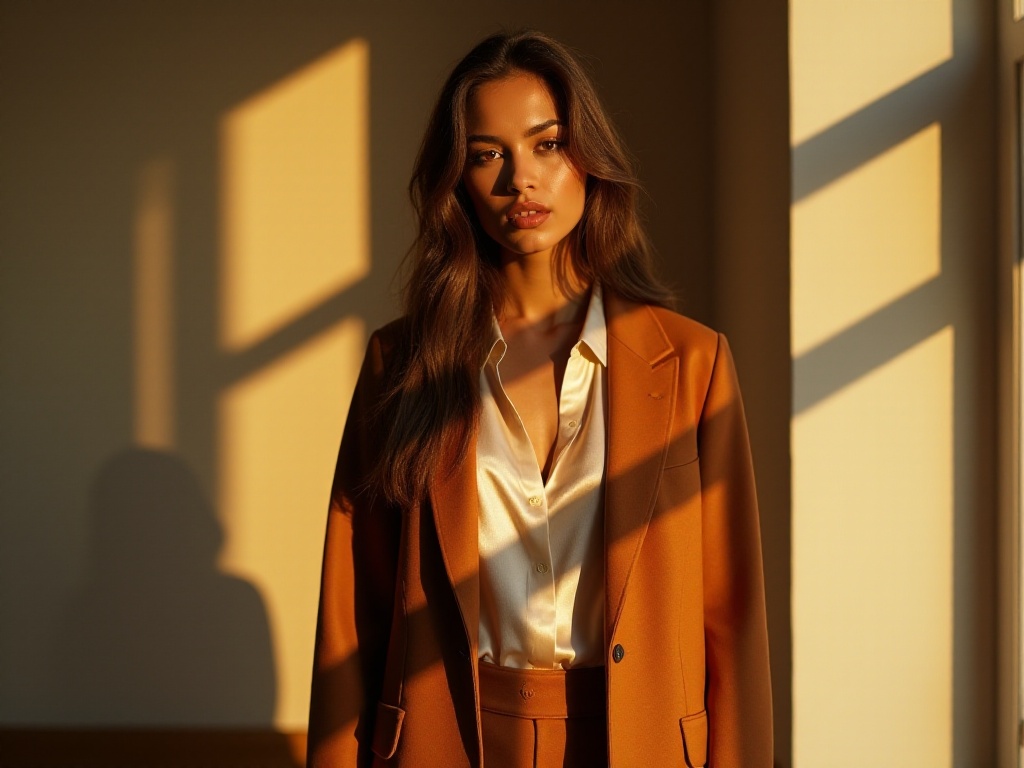
Body Proportions
Everyone's body has its own characteristics - the key is learning to emphasize strengths and minimize weaknesses. Through appropriate styling, we can make body proportions more harmonious.
If you have a petite frame, high-waisted styles are your best friend. High-waisted pants or skirts can make legs appear longer and overall proportions better. Avoid overly loose or long pieces that might overwhelm your frame. I have a petite friend who loves wearing high-waisted wide-leg pants with cropped tops - this combination makes her look much taller.
If you have a fuller figure, A-line pieces will suit you particularly well. A-line skirts can cleverly conceal leg fullness while emphasizing waist curves. For tops, choose V-neck designs to make the neck appear longer and the overall silhouette more elongated.
Tall women actually have many styling options, but should avoid looking too lanky. Choose horizontal stripes or belts to break up vertical lines. Also, mid-length coats or dresses work well for tall frames.
Wearing with Confidence
After all these tips, the most important thing is wearing with confidence. Fashion isn't about blindly following trends, but finding the most suitable way to express yourself.
I've seen too many people uncomfortable in their clothes just to follow trends. This actually makes them look unnatural. True fashion is finding your own style while mastering these basic principles.
To develop fashion sense, follow fashion bloggers or magazines, but don't completely copy their looks. Learn from their styling approach and adjust according to your own situation.
Finally, remember: no one is born knowing how to dress - it's a process of continuous learning and experimentation. Don't fear mistakes; every attempt is progress.
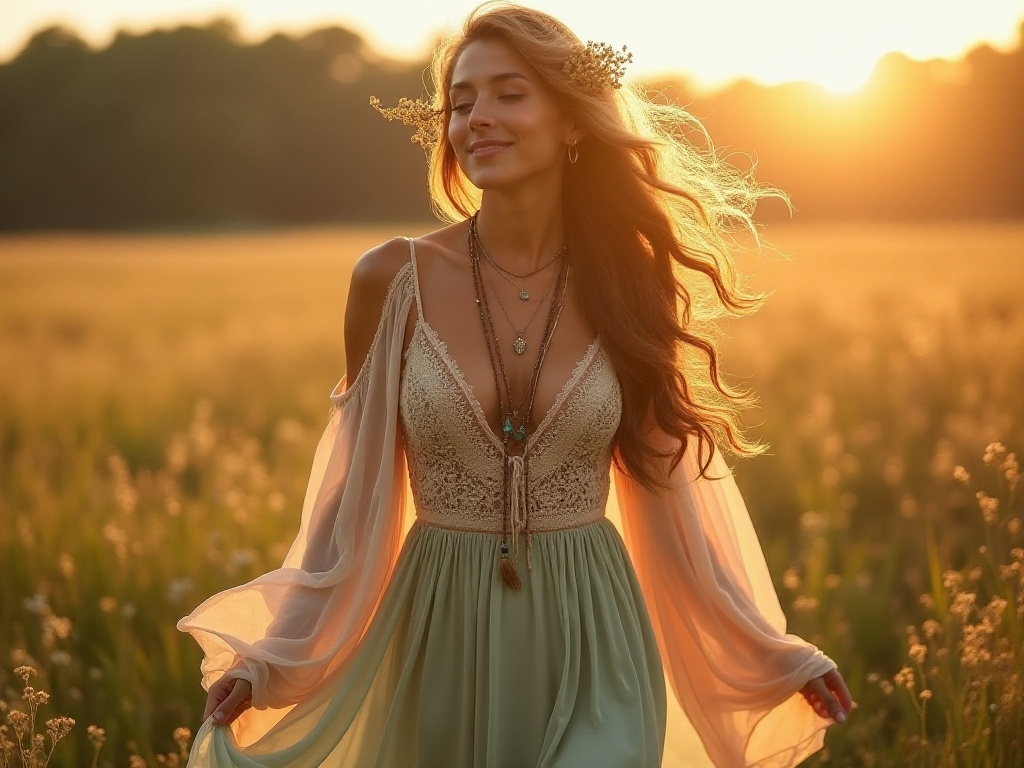
Conclusion
Fashion styling is an art that requires continuous learning and practice. Through this article's sharing, I believe you've gained new insights into styling. Remember, mastering these principles is just the beginning - true experts can flexibly apply these principles to create their own unique style. Let's continue exploring the path of fashion together and create our own brilliance!




